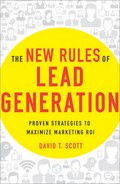When Should You Use Direct Mail
You should use direct mail if you sell a product or service that you think will get a good response with this tactic. Direct mail is very effective for products or services where the target customers need to take time to think seriously about whether to take advantage of a certain offer. It is also effective if you are marketing a complicated product or service where the offer has to be spelled out in great detail, or if you are presenting several detailed offers at once.
E-mail marketing, on the other hand, tends to work best for products that can be sold online, where the target customers can make a quick decision and take immediate action on the offer. In e-mail marketing, the product or offer needs to be explained very quickly and with a minimum of detail, or the target customers will become disengaged from the e-mail and lose interest in it.
Direct mail can also work very well if you have a brand-new, first-of-its-kind product or service that you need to explain in detail to the target customer. For example, since 2009, Clearwire has had tremendous success with their direct mail campaign to introduce their new WiMAX-based, 4G wireless Internet service for mobile users (which it now sells under the Clear label). Direct mail is a very effective way for Clearwire to introduce and explain the new WiMAX technology to potential customers.
B2C DIRECT MAIL
Certain business-to-consumer industries use direct mail very effectively. For example, credit card companies, mortgage brokers, and insurance companies have more success with direct mail than they do with e-mail marketing.
A financial, credit, or insurance offer is a serious decision to make, and people need time to think it over before they take advantage of it. Direct mail allows a financial, credit, or insurance company to give the customer an offer in writing in its entirety, including the fine print, so that customers know what they get if they sign up for it. It’s more reassuring for the customer to have a physical letter in front of them that outlines the offer in detail. Customers find this a better approach than a marketing e-mail, which asks them to make a snap decision to commit to a serious financial obligation.
Also, customers want to make sure a financial, credit, or insurance offer is genuine and legitimate before they commit to it. E-mail marketing doesn’t work as well for credit card, mortgage, or insurance companies because phony offers for these types of products are among the top spam e-mails. A legitimate promotional e-mail from such a company is likely to be mistaken for spam and deleted immediately. For offers from financial businesses, people would rather have a physical letter as proof that the offer is legit and the company is trustworthy.
Direct mail works well for selling vehicles. The auto, recreational vehicle, and recreational boating industries continue to spend billions each year on direct mail marketing because it helps them to increase sales and provides a significant ROMI. Direct mail is also effective for businesses that offer technical services for the home, such as lawn care, storm windows, or driveway paving. People need to consider these services carefully, because a technician has to come to their home to install or hook up a product.
Finally, direct mail works well for cable services because it allows them to add dimensionality to an offer. For example, Comcast can send out a direct mail envelope that includes one-sheet flyers for several different offers, such as high-speed Internet; basic cable service; and premium channels like HBO, Showtime, and so on. This kind of presentation allows the customer who opens the envelope to look at each flyer and consider each offer separately. (Also, using direct mail gives cable companies more control over their branding.)
B2B DIRECT MAIL
With a direct mail package, you can take time to fully explain a B2B product, service, or offer to customers, so they will understand the benefits of it. You can also include a gift, a catalog, a coupon, a visual aid, or any number of physical components in the package that may spark your potential customer’s interest in the offer.
By adding dimensionality to your B2B offer through a direct mail piece, you increase the chances that your target customers will at least consider the offer. CEOs or other executives are more likely to delete an e-mail offer without reading it. But if they receive a large envelope or dimensional mailer in the mail, they are more likely to open it just to see what it is. (Or their secretary or assistant will open it, and, because they assume it is important, will often walk it over to the executive’s office so that the executive can consider the offer.)
THE INDIRECT MARKETING THEORY
You might use direct mail as a “change-up” from your regular lead-generation marketing tactics. There’s a notion among marketers called the Indirect Marketing Theory, which states that marketers often flock to the most popular tactics of the day. When this happens, you can sometimes give yourself an edge by switching to less popular tactics where you have less competition. So if all your competitors are using e-mail marketing, you might try using direct mail as a way to get more attention from your customers. They may be more responsive to a direct mail package from you than they would be to another marketing e-mail from one of your competitors.
